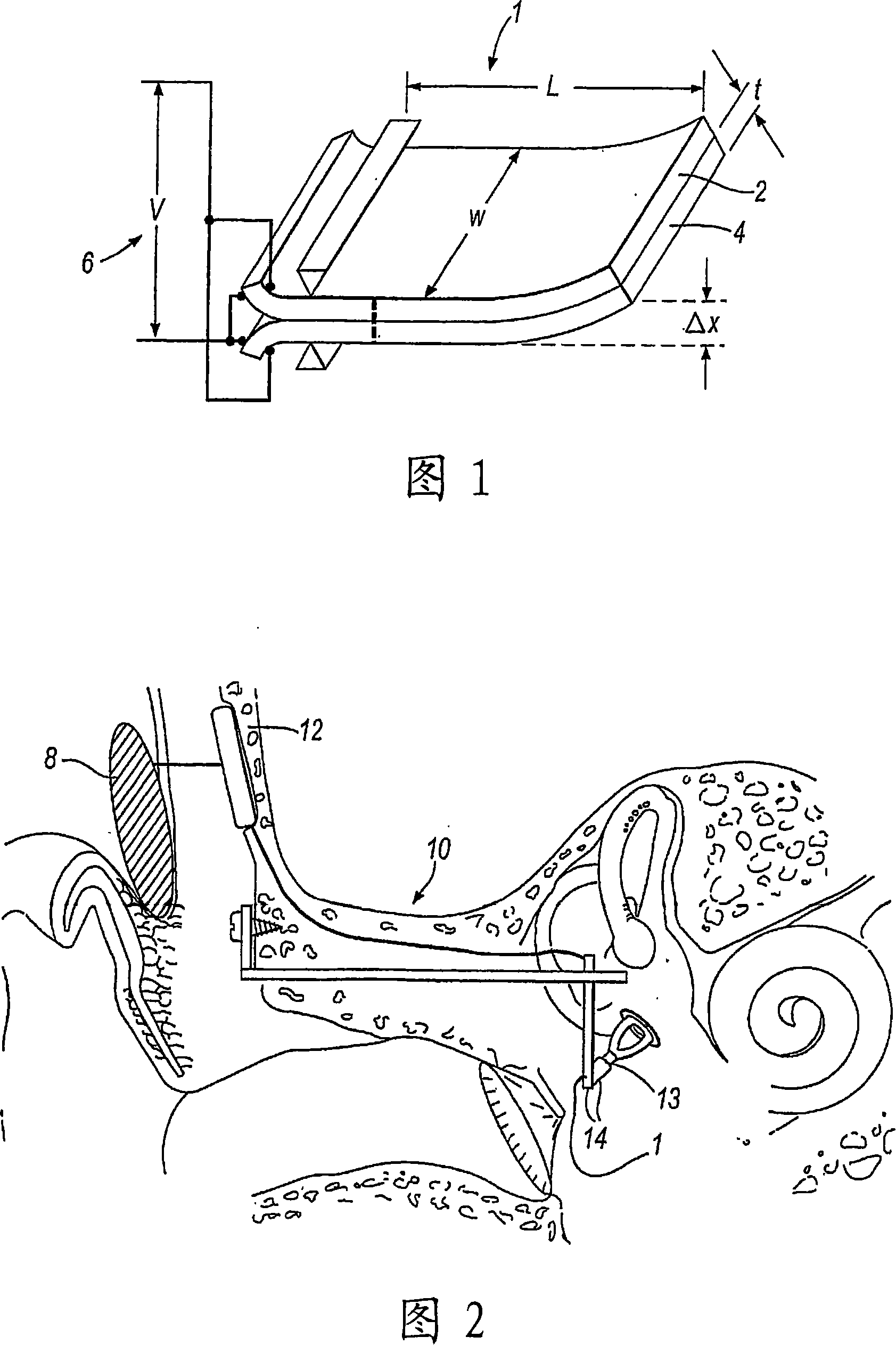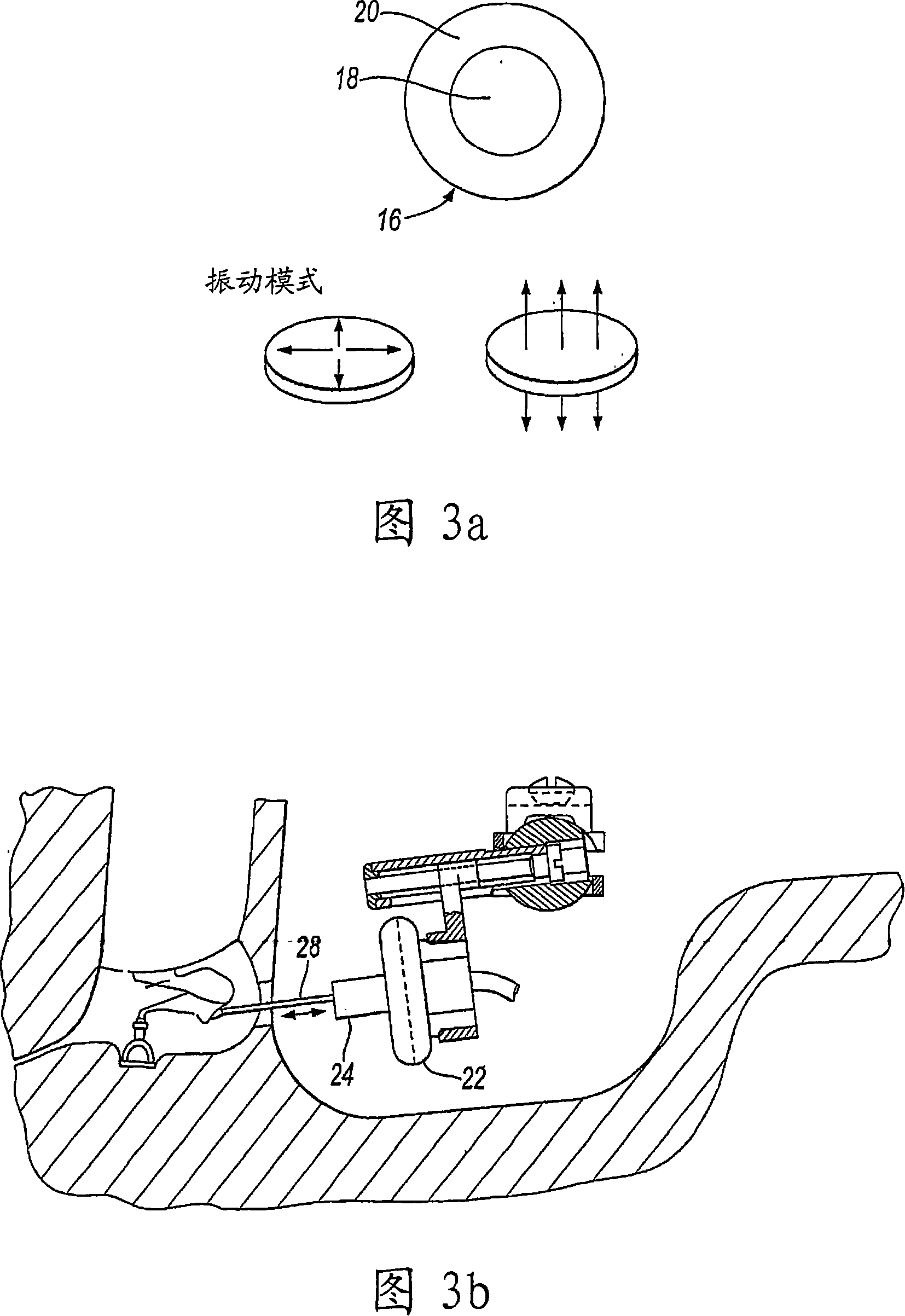Hearing implant
A hearing aid and actuator technology, applied in ear implants, hearing aids, medical science, etc., can solve problems such as discomfort, complexity, and insufficient sound quality
- Summary
- Abstract
- Description
- Claims
- Application Information
AI Technical Summary
Problems solved by technology
Method used
Image
Examples
Embodiment Construction
[0073] 1. Actuator based on d31 multilayer
[0074] A brief description will now be given of the multi-layer based compact actuator 30 shown in FIG. 4 . For the sake of clarity, the fixation means for connecting the actuator to the ossicles and the means for providing the acoustic information signal and electrical energy are not shown.
[0075]Figure 4a shows an actuator 30 which amplifies the displacement produced by a piezoelectric member 37 having two multilayer piezoelectric stacks 34, 36 forming a piezoelectric array. The frame member 35 includes dual flextensional amplifiers 38, 40 having integral first and second end portions 42, 44 that are positioned relative to the flextensional Amplifiers 38 , 40 are arranged substantially at right angles and are located at first and second end faces 41 , 43 of piezoelectric member 37 , respectively.
[0076] The frame member 35 is preferably made of medical grade titanium (ASTMF67), a material widely used in the hearing implant i...
PUM
 Login to View More
Login to View More Abstract
Description
Claims
Application Information
 Login to View More
Login to View More - R&D
- Intellectual Property
- Life Sciences
- Materials
- Tech Scout
- Unparalleled Data Quality
- Higher Quality Content
- 60% Fewer Hallucinations
Browse by: Latest US Patents, China's latest patents, Technical Efficacy Thesaurus, Application Domain, Technology Topic, Popular Technical Reports.
© 2025 PatSnap. All rights reserved.Legal|Privacy policy|Modern Slavery Act Transparency Statement|Sitemap|About US| Contact US: help@patsnap.com



